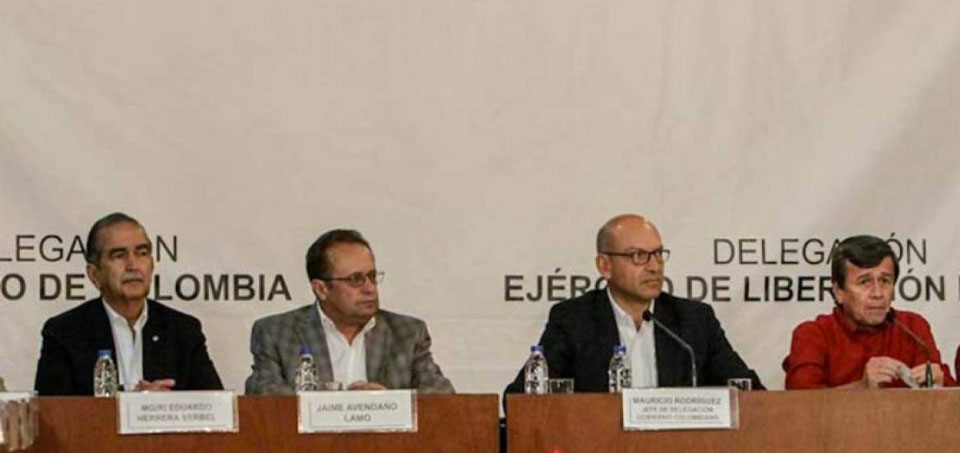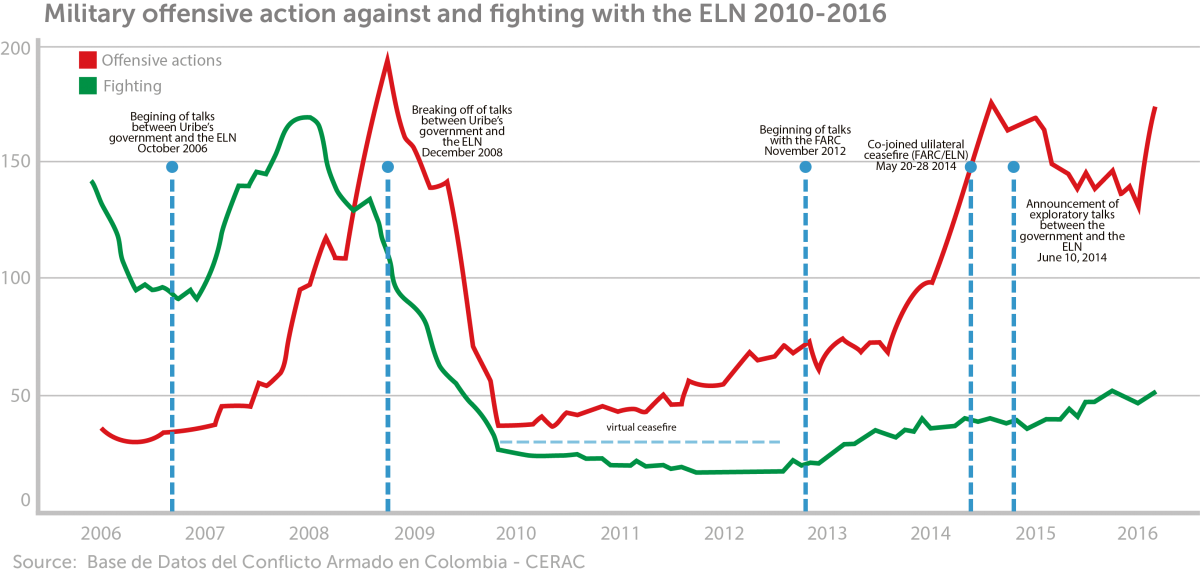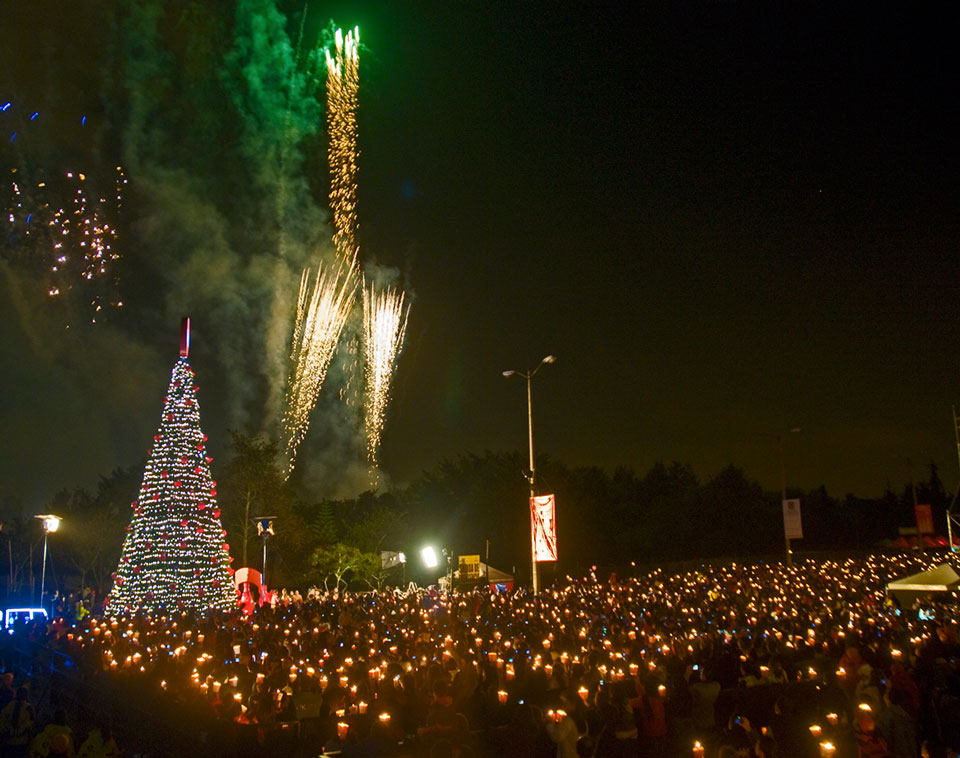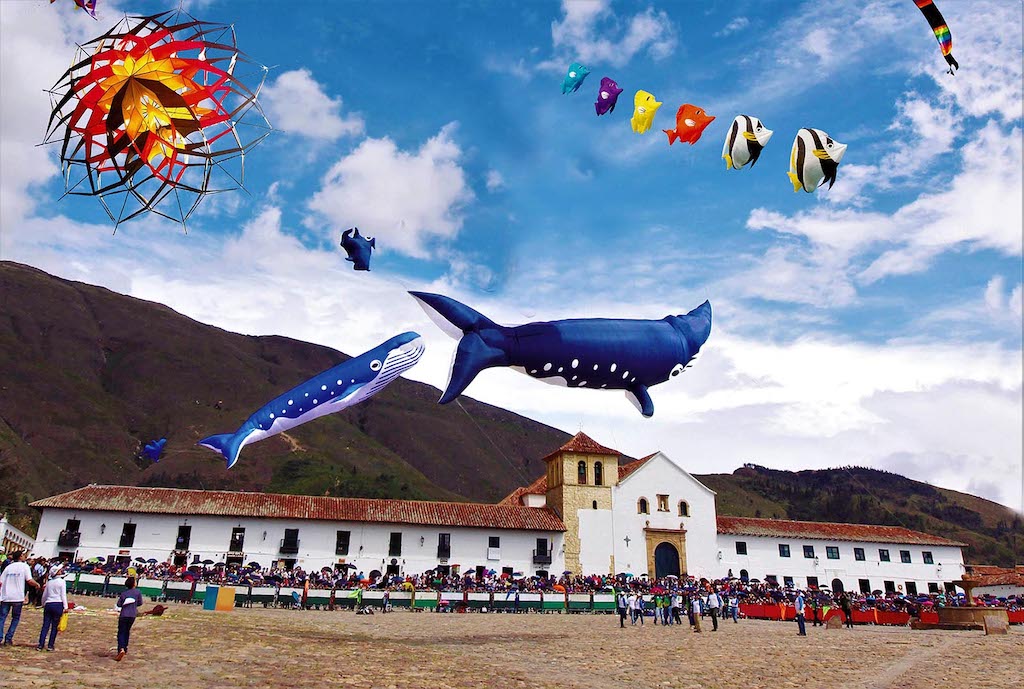
Despite various setbacks, the government and the ELN continue to talk in the search for peace.
Talks have finally started with Colombia’s second largest guerrilla group, but the first weeks of negotiations have been marred by attacks. Emily Hastings finds out more.
Recent weeks have seen a series of ELN attacks throughout the country, sparking both outrage and concern about the future of the fledgling negotiations.
The ELN claimed responsibility for setting off a bomb on February 19 in the central Bogotá neighbourhood of the Macarena, which killed one policeman and injured 25. They also attacked a military patrol near Villavicencio on February 14, and made several separate attacks on the Caño Limón Coveñas pipeline.
On the other hand, talks have officially started between the government and the ELN, and the insurgents issued a statement on March 2 saying they would make efforts to advance pilot programmes for de-mining in cooperation with the indigenous communities in Nariño.
How are the talks going?
It is very early in the process but the important thing is that after several false starts, the two sides finally began the formal phase of negotiations on February 7 and dialogues in Quito are continuing. The joint statement was issued on February 16, stating they have defined the way in which they will move forward on topics such as civil participation in the construction of peace and the dynamics of humanitarian actions.
On March 2, the delegations were joined by the president of the Ecuadorian Bishops’ Conference. The head of the government negotiating team, Juan Camilo Restrepo, said the voice of the church is key in these discussions.
The talks will continue in Ecuador, with the support of the sponsor countries, Venezuela, Norway, Cuba, Chile and Brazil.
The recent attacks, along with the ELN’s refusal to denounce kidnapping, will certainly complicate the negotiations. But so far the talks look set to continue. The six-point agenda will cover: social participation in the peace process, democracy, transformations for peace, victims, ending the armed conflict and implementation.
Who are the ELN?
The ELN (National Liberation Army / Ejército de Liberación Nacional) are Colombia’s second largest rebel group. The left wing group, inspired by Marxist ideology and Liberation Theology, were formed in the 1960s by Fabio Vásquez Castaño along with a group of students, intellectuals and Catholic radicals.
The ELN are known for kidnapping as well as their attacks on infrastructure, especially oil pipelines. They have also been responsible for a large number of the approximately 30 bombings that have hit in Bogotá since 2015.
A report by Sebastián Bernal at WOLA (an NGO that campaigns for Human Rights across the Americas) estimates they have between 1,500 and 1,800 members. He explains that in contrast to the FARC’s hierarchical structure, the ELN have a collective decision making structure which will complicate the negotiating process.
Why are the ELN carrying out attacks when the talks have started?
One way of interpreting the recent attacks is as a show of strength; an attempt to bolster their hand as the dialogues begin. Equally important for the ELN is the hope that they can push the government to agree to a bilateral ceasefire – one of the many difficult points on the agenda right now.
The ELN stressed the need for an immediate bilateral ceasefire in a statement: “It is not coherent for the government to sit at the table talking about peace, while postponing the bilateral ceasefire and subjecting the population to the suffering of war.”
They point out that one of the stated objectives of the government forces is to destroy the ELN, and claim that they are simply defending themselves.
However this does not look likely to stand as a successful negotiating tactic. Restrepo stressed on Twitter that if the ELN think they can force a ceasefire with attacks like the one in the Macarena, they are mistaken: “The ceasefire will be reached when the ELN understands that this will be achieved by de-escalating, not escalating the conflict.”
Did the FARC have a bilateral ceasefire during the peace talks?
No, the bilateral ceasefire only came into force when the two sides reached a final agreement in Havana. However at various points in the discussions, the FARC declared, extended and suspended their own unilateral ceasefires. While there were attacks, overall violence decreased during the four-year negotiation period.
 Why is a political resolution so important?
Why is a political resolution so important?
A 2016 report from Conflict Analysis Resource Centre, CERAC, says that “The persistence of ELN violence is one of the main risks facing the recently announced negotiation process towards a complete peace.”
Their analysis shows a steady rise in ELN hostilities since 2010, as well as an increase in military offensives against the ELN. Interestingly, their study does not show a correlation between increased violence and previous exploratory talks.
Successful talks are important on several levels, not least in de-escalating violence in areas that have been vacated by the FARC. In addition, the analysis shows that it will reduce the risks and obstacles in implementing the peace agreement.
CERAC conclude, “A negotiated solution to the conflict with the ELN is not only necessary but will bring fewer human and economic losses to the country than an elusive termination to the conflict by military means.”
By Emily Hastings





